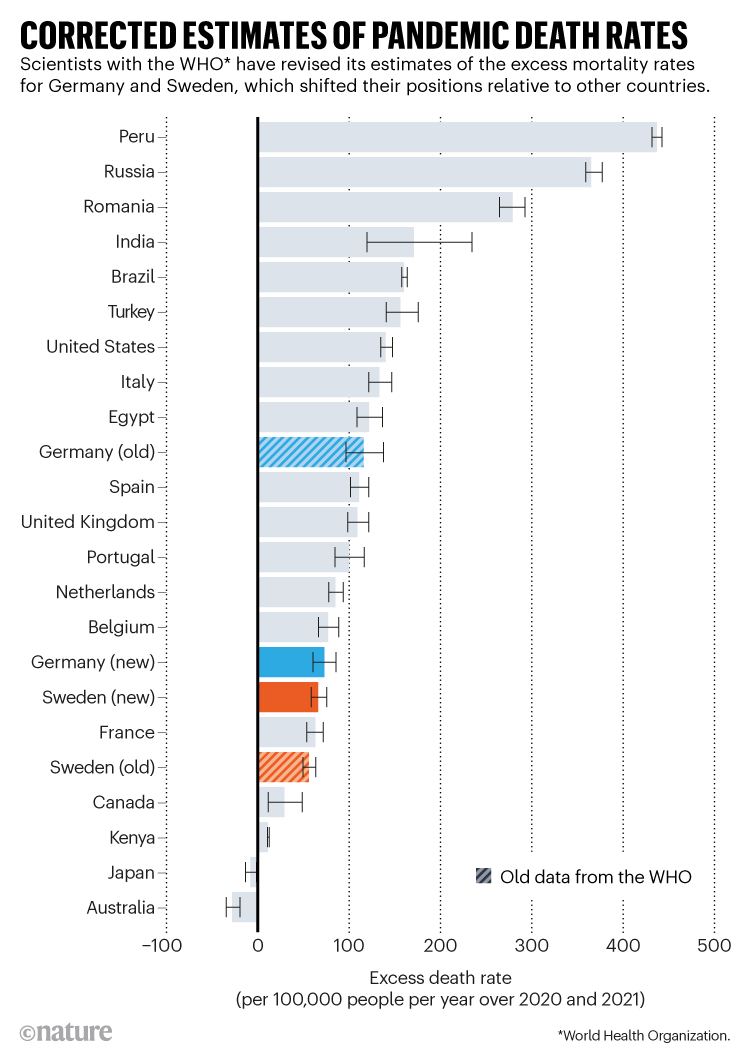You
can also view the message online

Châtenay-Malabry (FR - 92290), June 06, 2022
EFITA newsletter / 1042 - European Federation for Information Technology in Agriculture, Food and the Environment
The informatique-agricole.org site offers you the possibility of subscribing the RSS feeds of its two newsletters
See RSS feeds to implement to ensure that you continue to receive this newsletter
To unsubscribe this newsletter, please contact me directely: guy.waksman(a)laposte.net if this link Unsubscribe does not work.

To correspond with me (GW), please use this address: guy.waksman(a)laposte.net
To subscribe the efita newsletter (please ask your friends and colleagues to test this link)
Efita Newsletters subscription
The WHO confirms that France (its health system, the efforts of its citizens and its government) has come out of the Covid-19 crisis better than many others…
COVID death tolls: scientists acknowledge errors in WHO estimates, by Richard Van Noorden (in Natre
Researchers with the World Health Organization explain mistakes in high-profile mortality estimates for Germany and Sweden.
Please note that Putin failed to protect Russian people! A criminal!
The agricultural and food innovation show by LFD, La Ferme Digitale
14 June 2022 – PARIS
> Opening of the LFDay 2022
> The economic footprint by Loïc FINAZ, Vice-President of the Sea Foundation - (Keynote)
> Risk philosophy for the future: what future for AgriTech in the world? By Marie EKELAND (CEO - 2050) - Maarten GOOSSENS (Founding Partner - Anterra Capital) - Eric ARCHAMBEAU (Cofounder - Astanor Ventures) - (Round table in English)
> The agricultural footprint by Thierry BLANDINIERES, Managing Director of InVivo
> Building a new forward-looking society: the scale of the territories, by Didier ROUSSEAU (Investor - FAMM) - Pierre-André DE CHALENDAR (President - Saint Gobain) - Jean-Baptiste VAN EX (founder & CEO - Vicinity Group) - (Round-table)
> CEO STORY with Jean-Baptiste BISSONNET, General Manager of Boucheries Nivernaises
NFT, virtual reality, AI... what solutions for the agricultural sector? By Corinne LEJBOWICZ (President - Qwant) - Antoine VU (CEO - Atomic Digital Design) - Farid LAHLOU (Entrepreneur) - Laurent DAVID (Founder - Wine Angels) - (Round-table in French)
Space and Agriculture, what future? By Thierry CHAPUIS (Space applications expert - CNES) - Guerric de COMBRUGGHE (Chief Product Officer - ConstellR) - Sami YACOUBI (Cofounder - Spacesence) - (Dialogue)
Environmental footprint by Serge ZAKA, Agroclimatologist (ITK), Storm chaser - Sarah CORNE (Partner Impact - Founders Future) - (Keynote)
Climate action: the urgent need to support impact businesses, by Sarah CORNE (Partner Impact - Founders Future) - Bruno KATZ (Vice-Director - Salesforce France) - Pierre ABADIE (Climate Director - Tikehau Capital) - Mark-André GOEDDERTZ (Director Business Development - BAYER) - (Round table in English)
Is there a better designer than a farmer? By Kheiredddine SIDHOUM - Global chief creative officer at Dragon Rouge - (Keynote)
French Tech Agri20: the new programme to support start-ups with impact! By Clara CHAPPAZ - Director of La French Tech
Closing Remarks, by Erik ORSENNA - Writer & 17th chair Académie Française
See lfday.fr/en
LFD Members
See lfadays.fr
Avant l’informatique : Vintage tractors
FIRA USA 2022
18-20 October - FRESNO, California
FIRA USA is the Agricultural Autonomous Solutions event for the California and North America Growers
- Business Time with expo zone and networking;
- Panel discussions and breakout sessions;
- In-field demos with bus tour;
- R&D Day.
See fira-agtech.com
Agricultural Robotics Village by FIRA, at SIMA - PARIS, France
6-10 November - PARIS
At the heart of the SIMA Tech area, discover the autonomous solutions for farming.
Meet the major manufacturers on FIRA's pavilion!
See agricultural-robotics.com
World FIRA 2023
7-9 February - TOULOUSE, France
The world's leading event for innovations showcase in agricultural automation and robotics.
NEW: Outdoor event!
Contact
Weekly newsletters about ICT in Agriculture in English and French
Both newsletters have around 14000 subscribers.
>>> Last weekly EFITA Newsletters in English (created in 1999) Efita Newsletters
>>> Last weekly AFIA Newsletters in French (created more than 20 years ago in 1997) Afia Newsletters
>>> Statistics for the last efita newsletter
>>> Last issue of the afia newsletter
>>> Last available satistics for the afia newsletter
The Coming Day, by John Alfred Arnesby Brown (1866–1955), Norfolk Museums Service
| 01 - 02/06/2022 |  |
The global COVID vaccination effort has made great progress — but low income countries still lag far behind
Almost a year and a half into the global COVID vaccination campaign, there has been great progress in many countries.
Around three-quarters of those in high- and upper-middle income countries have completed the initial vaccination protocol, and many have received one or more booster doses.
Yet low income countries still lag far behind — just under 13% of people have completed the initial protocol. In some countries, such as Haiti and Yemen, this number is still under 2%.
> Explore our global vaccination dataset, alongside cases, deaths, hospitalizations, testing, and other metrics by country in our COVID Data Explorer.
The Hayfield by John Alfred Arnesby Brown (1866-1955), King's Lynn Museums
| 02 - 02/06/2022 | 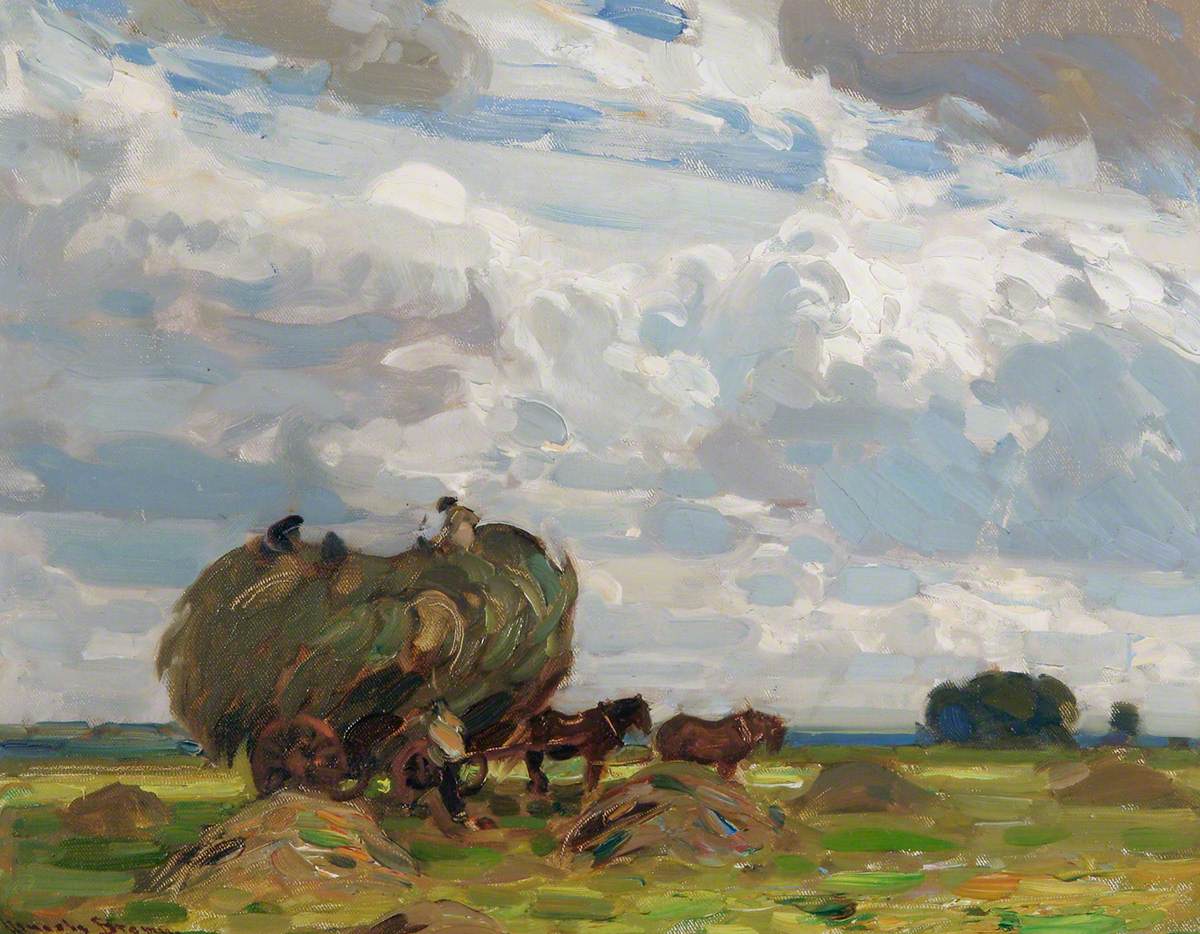 |
MyEasyFarm Driver, the new mobile application
The MyEasyFarm Driver mobile application, designed for drivers, allows the platform to be used without necessarily having a console in the tractor.
>> MyEasyFarm also fits in your pocket!
The MyEasyFarm Driver mobile application, designed for drivers, allows the platform to be used without necessarily having a console in the tractor.
Now thanks to the MyEasyFarm Drivermobile application, your phone can automatically record your interventions. And it can help you manage the following points:
>> Automatic job registration
MyEasyFarm automatically detects your entry and exit in a plot. Thus the application can start or end a task by itself. This allows you to determine the time spent in each plot. Then you can document these tasks with other information such as the input used and the quantities applied.
>> Telemetry
Indicate the hardware used and geolocate it on the MyEasyFarm platform by activating geolocation on the mobile application. This way, the positioning of your machines is sent directly to the platform and you can follow your machines from your office.
>> Task views
This mobile application allows drivers to organize their day by visualizing all the tasks they have to perform and the information needed for each intervention (location of the plot, equipment, employee, input and input quantities...).
>> Easy modulation without a console
Display your recommendation maps and geolocation on your phone to vary the rate applied manually to each location in the plot.
See myeasyfarm.com
The largest mammals have always been at the greatest risk of extinction – this is still the case today
Looking at the average size of mammals over the last 1.5 million years, we see a clear trend: they’ve gotten much smaller, with their mean mass decreasing by more than 98%. Very large mammal species, such as “straight-tusked elephants” and the Southern Mammoth, disappeared one by one.
Why has this happened?
The evidence points toward one main culprit: humans. Our small but big-brained hominid ancestors hunted the largest mammal species to extinction.
In this article we look at the history of this “downsizing” of mammals, and discuss how the biggest mammals are still at the greatest risk of extinction today — but it doesn’t have to be this way.
What share of people say they are vegetarian, vegan, or flexitarian?
There is a growing interest in the environmental, ethical, and health impacts of our diets. Is this translating to changes in dietary preferences?
In this article we look at recent data from YouGov, the polling group in the UK, which surveys around 2,000 adults every six months about their dietary preferences.
Most people reported that they eat at least some meat; 5% described themselves as vegetarian; 3% as pescetarian, and 2% as vegan. A larger share—16%—described themselves as “flexitarian,” meaning they are mostly vegetarian but occasionally eat meat or fish.
Young people were much more likely to report eating no or very little meat.
We will update this data every six months with the most recent survey results.
How did we see the future yesterday??
See the incredible collection developed by Alain Fraval
Meet ROBOTTI, the Do-It-All Farm Robot
AGROINTELLI’s autonomous implement-carrying innovation has been more than 20 years in the making and commercial ready for the last four. Farmers are eager to see what it can do.
In recent years, much of the discussion and debate surrounding ag robotics centers on the idea of helping farmers do more with less. The growing constraints on farmers’ time, money and resources have contributed to the increase in machines dedicated to tackling the sector’s most monotonous, repetitive tasks.
See agricultural-robotics.com
The Innovators Solving Ag Robotics’ Perception Problems
VARTA believes that those who collect, analyse and understand data will be the ones to succeed long-term. Here’s how one of the world’s leading battery manufacturer works to stay ahead of the curve.
The changes to the agriculture industry are far-reaching and wide-ranging. From robotics slowly making their way to operations around the world to the increased emphasis on environmentally friendly practices, automation companies are pivoting to meet their customers’ shifting needs and expectations.
See agricultural-robotics.com
The White Bull, by John Alfred Arnesby Brown (1866–1955), Bury Art Museum
| 03 -02/06/2022 | 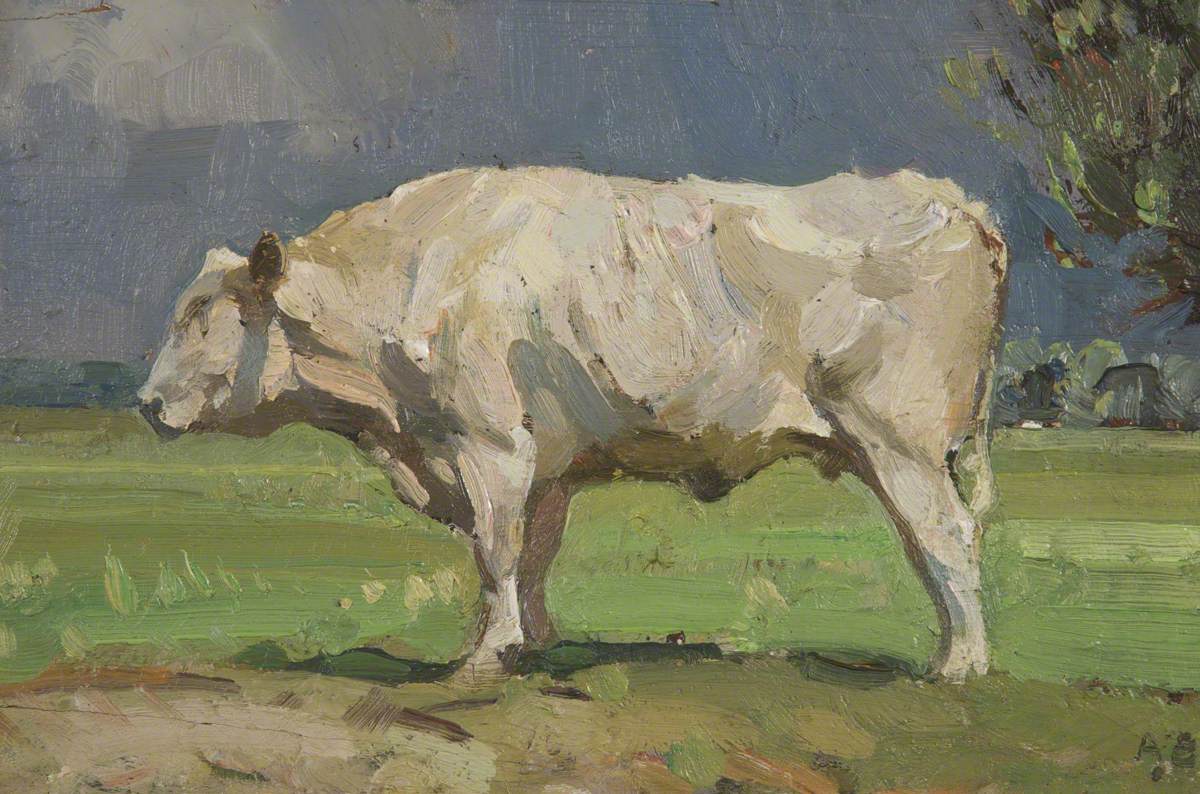 |
FutureFarming.com
> This is how the Horsch RO 1 field robot works
In February 2021, machine manufacturer Horsch surprised the world with the first images of its autonomous RO 1 traction unit. More recently, traction unit type 2 was revealed and there’s two more to come. Who needs tractors any longer?
> Azurit brings more yield!
Due to the optimized space distribution the plant gets more nutrients, water and light. Thereby the precision seed drill Azurit has been proven to increase yield up to 4,5 %. Convince yourself of the advantages of the innovative precision seeding technology in the DeltaRow method.
> Autonomy… John Deere: Autonomy kit on every large tractor
During the Leaps Unlocked event on May 26, John Deere stated it’s the company’s goal to have an autonomy kit on every large tractor it ships. Deere has also planned out a fully autonomous corn and soybean production system by 2030.
> Pollinators: Satellites and drones could help save pollinators, research shows
According to University of Exeter researchers satellites and drones can be used to track the availability of flowers, and this could be combined with behavioural studies to see the world through the eyes of insects.
> Harvesting: Green Growth Yield Monitor simplifies collecting harvest data
Green Growth, a developer of real-time yield mapping technology for farmers, releases Green Growth Yield Monitor to make yield monitoring and analysis highly effective and as simple as possible.
> Irrigation: WaterWise technology saves on water and delivers higher yields
Australian company Goanna Ag will make its GoField water management solution commercially available in the U.S. from 1 June. Goanna Ag is currently trialling the system in the U.S. in collaboration with the USDA Agricultural Research Service.
> Tools & Data: Cropin to bring predictive intelligence to every acre of farmland
With an initial team of 30 members comprising Earth Observation Scientists, Data Scientists, Agronomists and AI/ML Researchers, Cropin's AI Labs will focus on studying and ‘computing’ cultivable lands worldwide.
> Drones… Field Trials Podcast – Building more accurate analysis tools
In part 1 of the latest episode of Future Farming’s Field Trials podcast features Mike Winn, the company’s chief executive officer and co-founder, discussing where he and his colleagues have made strides in drone-based agronomy, as well as lessons revealed over DroneDeploy’s nine plus years in business.
> What’s new in our drone buying guide 2022?
Future Farming introduces ten new application drones in its drone catalogue this year. Drones are increasingly capable of performing more and more tasks in the field. It is clear that farmers are currently presented with an impressive range.
> Partner feature: Innovative seeding method increases yields
Michael Richardson is a farmer by conviction. The family has been running the dairy farm in the heart of Lancashire for four generations. His 150 cows are particularly close to his heart. With his 75 hectares of arable land, the farmer grows corn for his dairy cows, among other things.
> Field robots: E-robotiller field robot makes its public debut
The Dutch e-robotiller was recently presented to the public for the first time in the Netherlands. The e-robotiller is a field robot designed for tillage. The machine is powered by a hydrogen fuel cell.
> Irrigation: SWAN Systems builds momentum in export markets
Australian agtech company SWAN Systems has announced the completion of an AUS $ 3 million (US $ 2.11 million) capital raise. The funds will be used to build momentum in various export markets.
> Autonomy: Trimble introduces OEM GNSS receiver module for autonomy applications
Trimble has introduced the BD9250, a dual-frequency OEM GNSS receiver module that supports Trimble RTX correction services. The receiver is designed to deliver high-accuracy positioning for a range of high volume, autonomous-ready applications used in agriculture.
> Cybersecurity: Cyberattacks threaten digital agriculture, reseachers warn
Digital agriculture is is prone to cyberattacks – particularly if the ag-tech sector doesn’t take adequate precautions like other corporate or defence sectors, researchers warn.
See futurefarming.com
Sheepfold, by John Alfred Arnesby Brown (1866-1955), Bury Art Museum
| 04 - 02/06/2022 | 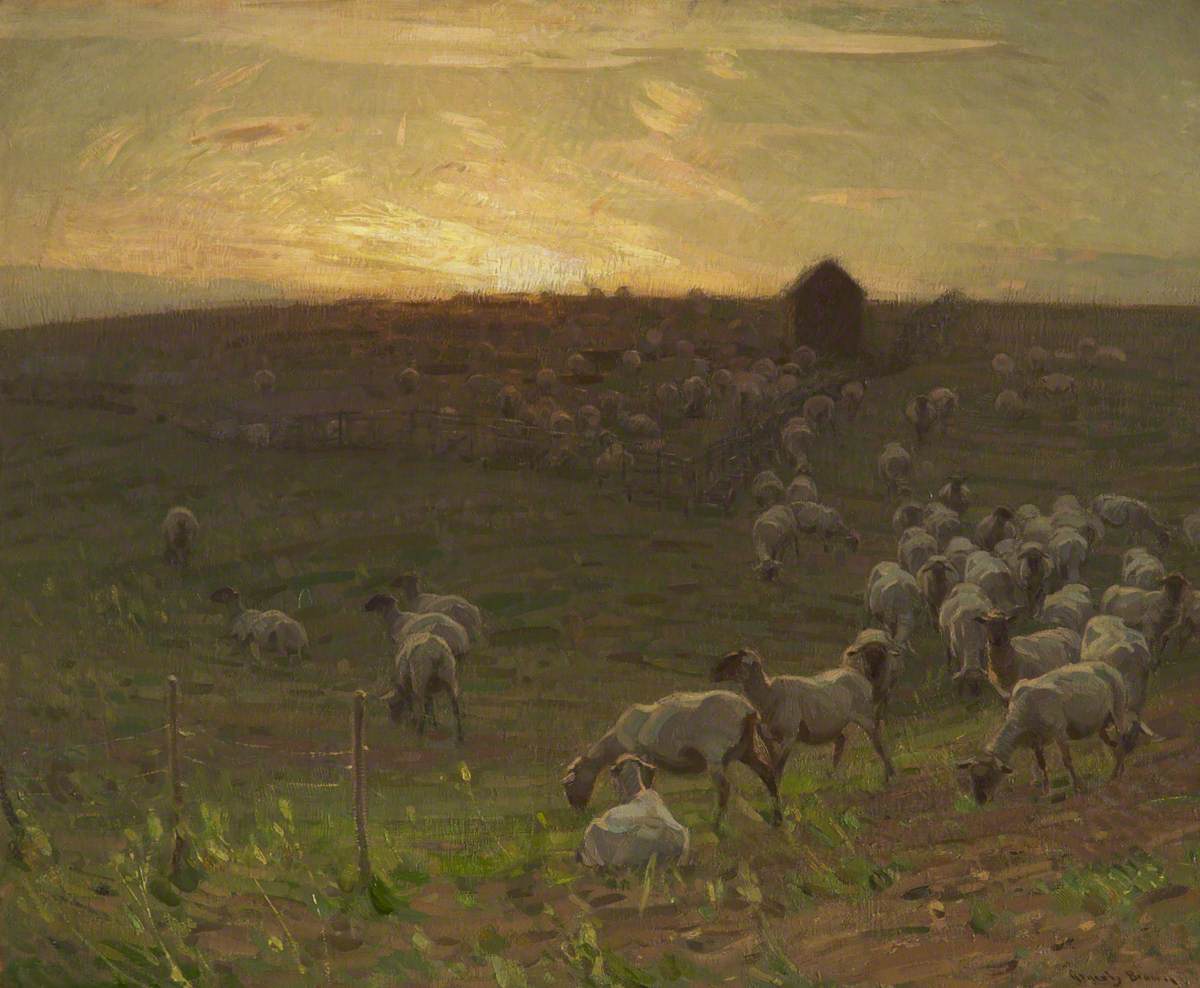 |
Agtech Collaboration Between the UK and The Netherlands Highlights Latest Horticultural Innovation
Both countries are looking for solutions to help meet the challenges of sustainable global food production.
See precisionag.com
FarmQA Partners with Planet for High Resolution Daily Satellite Imagery
Further equip agronomists, crop consultants, and growers with the field-specific imagery they need to diagnose problems.
See precisionag.com
Kenya’s Victory Farms nets $5m as it edges towards precision fish farming, AFN, by Lucie Ngige
Fish feeds over 200 million Africans, according to the United Nation’s Food & Agriculture Organization (FAO). In most regions of the continent like East Africa, the supply of fish annually falls short of demand. This is primarily because fishing rates are unsustainable. A study published in the Marine Ecology Progress Series Journal reveals that fish stocks along the coast of East Africa are depleting to alarmingly low levels, with 70% of the reefs below sustainable levels.
The Kenyan fish market, which is valued at around $5oo million according to Victory Farms, still has to deal with unsustainable fishing practices. According to the company, there has been a 90% decline in tilapia, which is the most popular freshwater fish, as the human population surges.
“The problem is the wild catch cannot keep up and it isn’t going to bounce back, at least not for a long time. The traditional way of doing aquaculture is also very inefficient and that’s the way that’s practiced almost everywhere in Kenya and East Africa,” Joseph Rehmann, CEO and co-founder of Victory Farms told AFN.
…/…
See agfundernews.com
Landscape with Church, by John Alfred Arnesby Brown (1866-1955), Bury Art Museum
| 05 - 02/06/2022 |  |
Kenya’s Victory Farms nets $5m as it edges towards precision fish farming, AFN, by Lucie Ngige
Fish feeds over 200 million Africans, according to the United Nation’s Food & Agriculture Organization (FAO). In most regions of the continent like East Africa, the supply of fish annually falls short of demand. This is primarily because fishing rates are unsustainable. A study published in the Marine Ecology Progress Series Journal reveals that fish stocks along the coast of East Africa are depleting to alarmingly low levels, with 70% of the reefs below sustainable levels.
The Kenyan fish market, which is valued at around $5oo million according to Victory Farms, still has to deal with unsustainable fishing practices. According to the company, there has been a 90% decline in tilapia, which is the most popular freshwater fish, as the human population surges.
“The problem is the wild catch cannot keep up and it isn’t going to bounce back, at least not for a long time. The traditional way of doing aquaculture is also very inefficient and that’s the way that’s practiced almost everywhere in Kenya and East Africa,” Joseph Rehmann, CEO and co-founder of Victory Farms told AFN.
…/…
See agfundernews.com
Poor crypto ecosystem?
| 01 - 02/06/2022 | 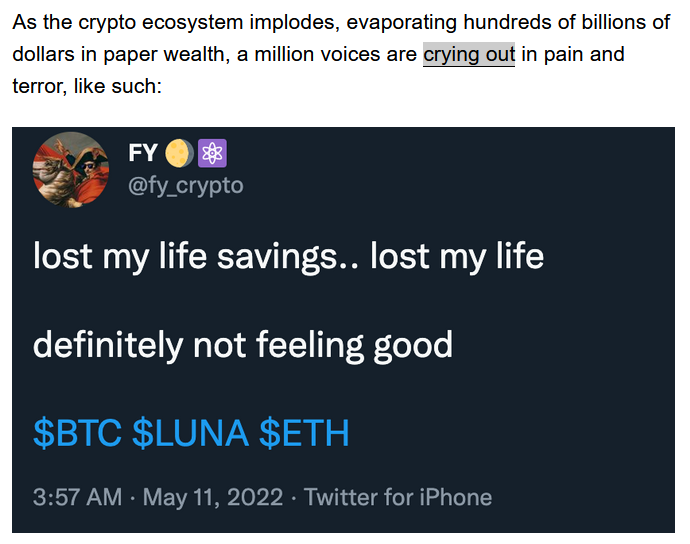 |
To reduce traffic, this company wants cargo e-bikes to replace delivery vans, Bloomberg, by Blake Schmidt (feat. URB-E)
See bloomberg.com (for subscribers only)
Bitcoin, up and down
| 02 - 02/06/2022 | 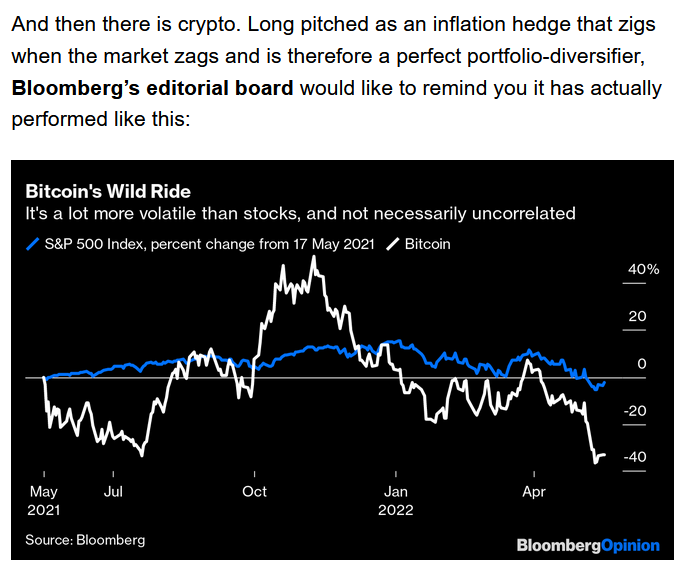 |
Solar Microgrids Are Keeping Ukraine’s Hospitals Running, by Chris York, May 23, 2022
U.S. renewables experts support the war-besieged country with tech hailed a ‘game-changer’ for disaster relief settings.
.../...
Are solar microgrids the future of humanitarian response? In one sense, that future is already here. That said, there’s still a place for more powerful diesel generators until solar technology further improves.
“It depends on what the mission is,” says Shmotolokha. “If you’re housing refugees in a stadium and you need to power the stadium lights, you’re going to need a megawatt diesel generator. But if you want to run a community center that’s distributing food, then we’ve already done that a bunch so no problem there. There’s a lot of innovation happening. What we’re doing today, you just couldn’t have done even two or three years ago.”
See reasonstobecheerful.worldv
Poor speculators?
| 03 - 02/06/2022 | 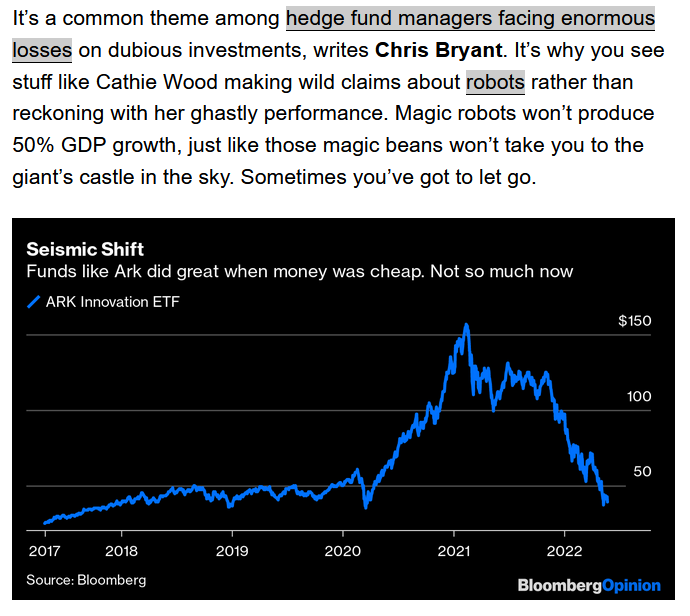 |
FIRA OPEN DAY 2022 / Replay #WFIRA21 / The Push to Increase Ag Robotics Adoption on Farms
With an abundance of new autonomous machines hitting the market each year, experts weigh in on the best approach to fund, deploy and scale-up these high-tech solutions.
The market for agriculture robots is beginning to hit its stride. An influx of autonomous machines have moved beyond the prototype and testing phases, and potential customers are ready to see what the latest robots can help them accomplish on their farms.
See agricultural-robotics.com
Commodities up
| 04 - 02/06/2022 | 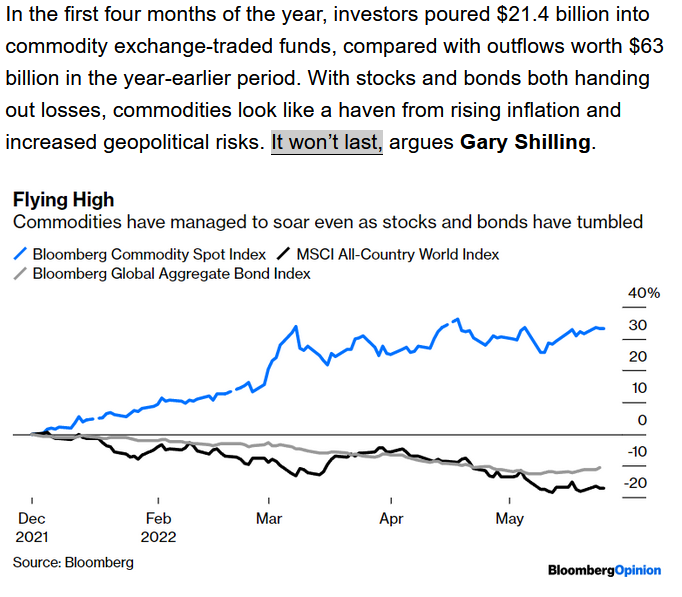 |
Yannick Robiglio: “Field robot gives me back control over my time”
The Vitibot Bakus is a viticultural straddle robot that integrates a wide range of modular tools. After careful consideration, French wine grower Yannick Robiglio decided to buy one. He has been working with it for a year now. What are his experiences?
See futurefarming.com
FarmWise’s weeding robots haul in $45m Series B funding from Taylor Farms, others, AFN, by Jack Ellis
The FarmWise platform uses artificial intelligence, cameras, and sensors to generate a mass of “plant-level data” — including size, stress levels, and identifying features — which its fleet of Titan robots then relies on to differentiate between crops and weeds.
A set of robotic arms on the underside of each Titan unit then mechanically removes the weeds as they trundle across the vegetable field.
FarmWise claims that its platform’s plant database includes more than 450 million scanned images of individual crops collected over 15,000 commercial hours in the field.
See agfundernews.com
See video
Hay Cutting on the Norfolk Marshes, by John Alfred Arnesby Brown (1866-1955), Great Yarmouth Museums
| 06 - 02/06/2022 | 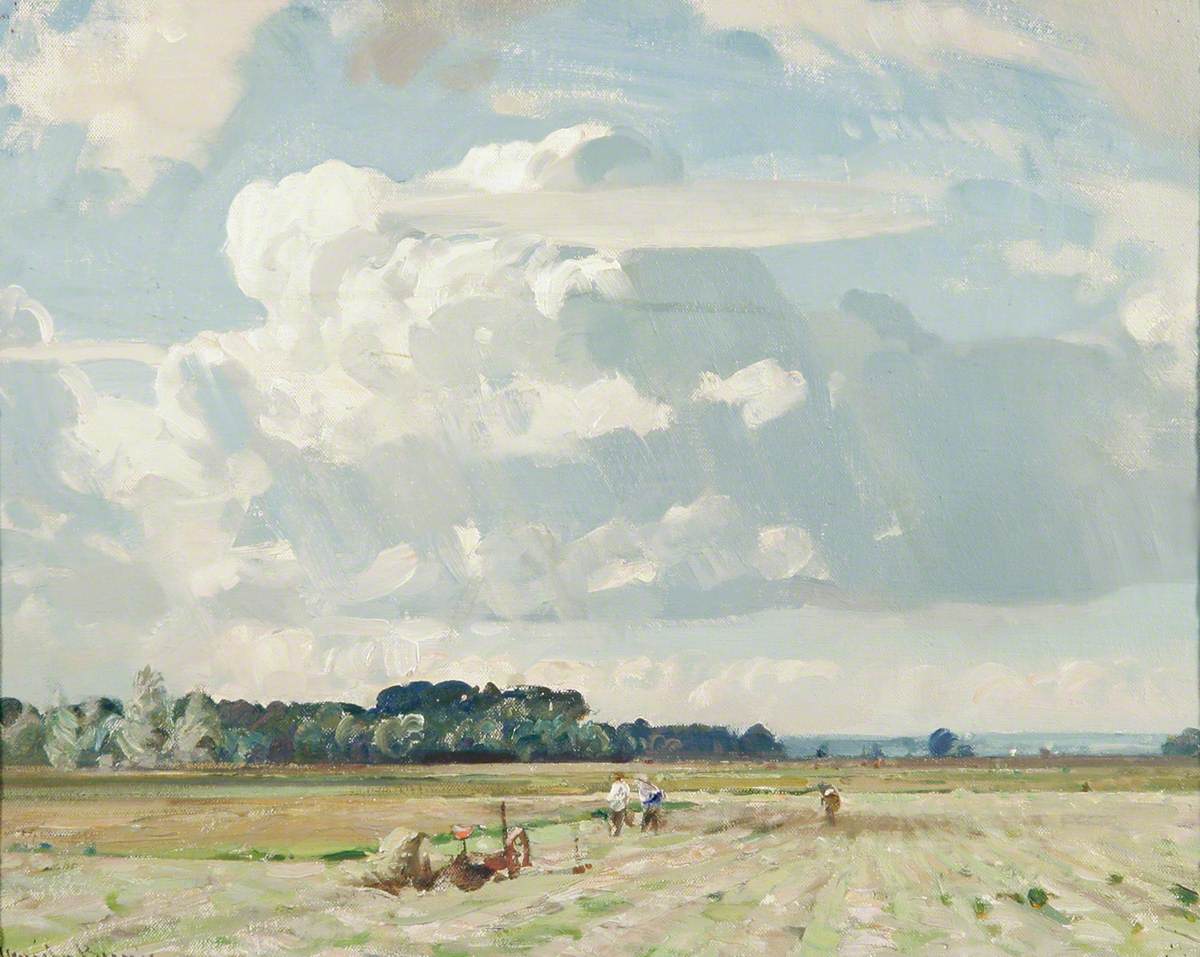 |
Connectivity in Australia: how it applies to Ag Robots and Autonomous tractors
Australia has a large and very diverse agricultural sector which like many countries is suffering from labour shortages and the need to use precision agriculture to minimise ever increasing input costs.
Autonomous tractors and Ag-Robotics have the potential to solve many of the problems being faced on Australian farms with fleets of smaller machines instead of a few very large machines helping to de-risk key operations such as the planting season. Tom Andrews is the CEO of Connected Farms, an Australian specialist agricultural connectivity and agtech company that has become the leading provider of connectivity for ag-robots and autonomous tractors. In this article Tom gives an overview of the connectivity issues and solutions being used to enable the use of Ag-Robots and autonomous implements in Australia. This has been written with the context that agricultural field robots need mobile broadband to effectively operate.
See agricultural-robotics.com
Haymaking (recto), by John Alfred Arnesby Brown (1866-1955), Nottingham City Museums & Galleries
| 07 - 02/06/2022 | 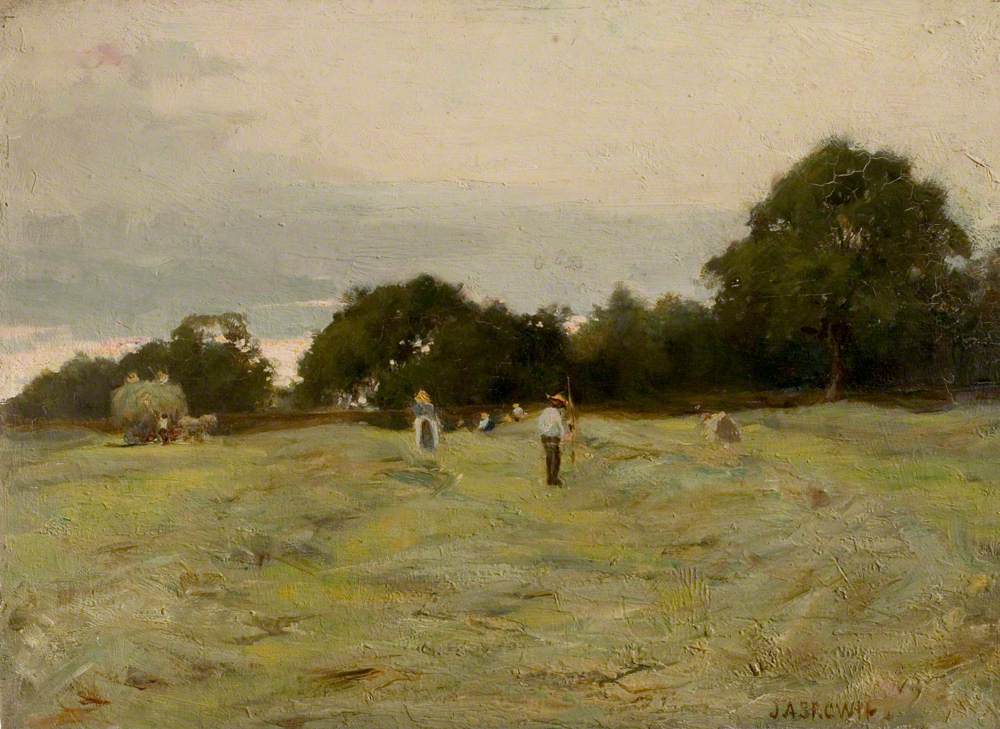 |
Regrow Ag Secures $38M in Series B Funding
Funding strengthen its leadership position powering companies to use agriculture to Meet net-zero targets.
See precisionag.com
Babylon Micro-Farms Launches More Sustainable Version of Its Cloud Controlled Vertical Farm
The Galleri features an easy-to-clean tray, a water temperature control system, a full-glass enclosure, and an improved sensor array.
See precisionag.com
Ben Craker to Join AgGateway as Portfolio Manager
He most recently worked at Kuhn North America as Senior Product Manager.
See precisionag.com
Japan: a model?
(It seems to me that there is wide cultural gap between Japan and Europe. It is difficult to compare their situations. That stated, the UK Covid performance was really poor)
| 05 - 02/06/2022 | 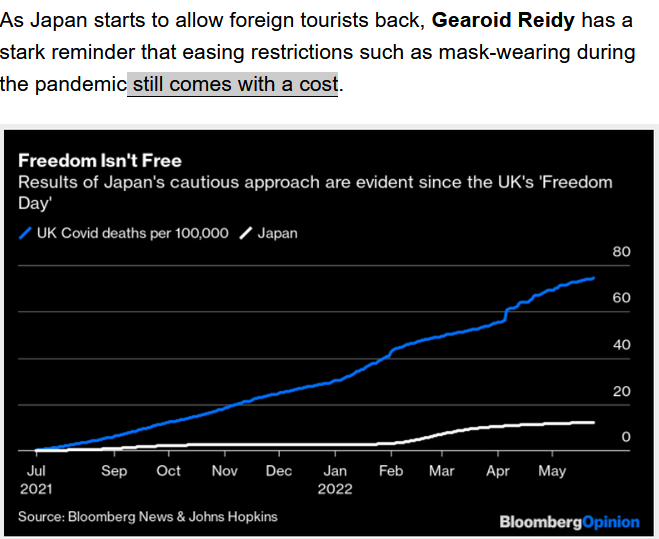 |
Broilers culled because of avian flue
| 06 - 02/06/2022 | 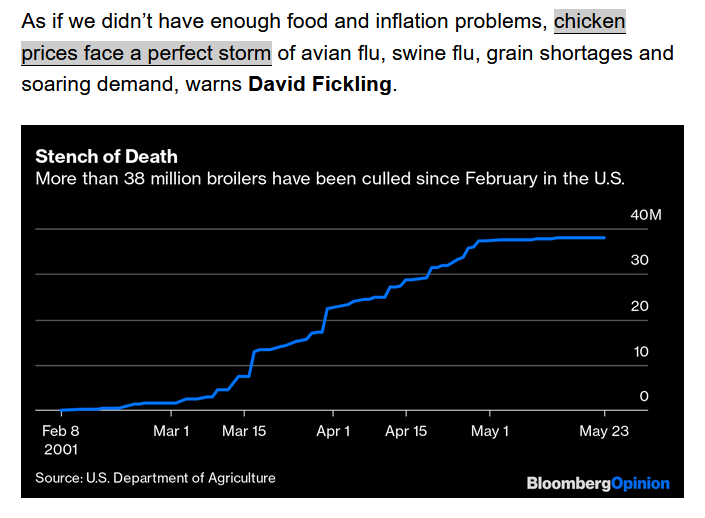 |
How innovation in farm payments can create a welfare system for the environment, AFN, by guest contributor: Ximena Rueda
The UK’s ongoing overhaul of farm subsidies in the wake of Brexit has coincided with growing global calls to repurpose public agricultural subsidies in order to achieve environmental goals. At the same time, private impact investment into schemes that encourage farmers to protect and restore nature is on the rise. Yet neither new funding nor traditional subsidies will reach their aims without first improving farm-level payment mechanisms.
Private finance may help fill the huge global funding gap in paying for our shared targets for nature and society. But the world is increasingly beginning to accept that nation states have the same social and financial duty to protect natural habitats and ecosystems as they do people.
Public agencies and governments must therefore scale up funding and innovation to meet environmental goals in the same way they deliver social welfare schemes: by dedicating resources to designing fair and effective farm payments that have both the short-term needs, and the long-term interests, of the users in mind.
As stewards of the world’s natural resources, farmers need targeted support to equip them to protect and restore nature, requiring conditional farm payments that are fair and just.
Badly-designed farm payments can inadvertently make the poor poorer, with large landowners – and larger smallholders, even – benefiting at the expense of subsistence farmers, tenants, and the poorest rural people. Such misguided farm payments can compromise equity in an attempt to target the most environmentally impactful farmers; and they can still miss environmental goals nonetheless.
.../...
See agfundernews.com
May Morning, Nottingham, by John Alfred Arnesby Brown (1866-1955), Nottingham City Museums & Galleries
| 08 - 02/06/2022 | 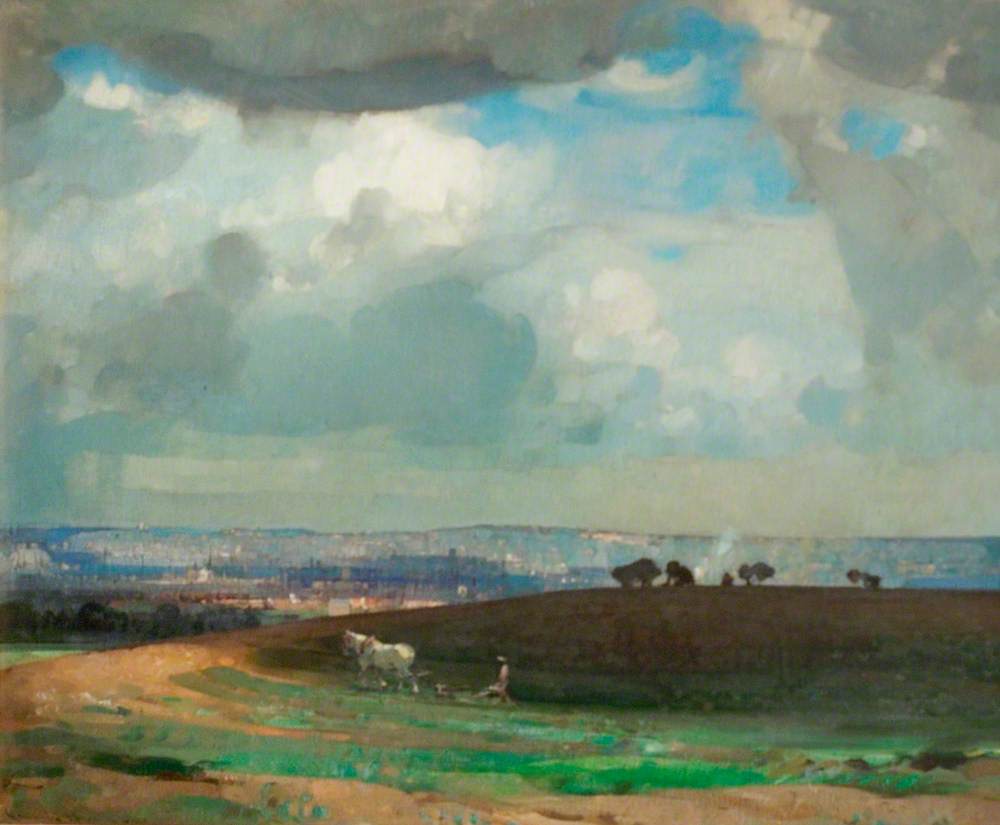 |
agricultural-robotics.com
> Green Robot Machinery : Precision Cotton Picking Machine
> The Innovators Solving Ag Robotics’ Perception Problems
> AgRobotics Land: the new brand for the agricultural robotics ecosystem in Southern France
> Implement Automation and Coordination with Robot for Agriculture Tasks Achievement
> Developing the Next Generation of Farmer-Approved Ag Robots
> Old and New Autonomous Technologies Collide on the Farm
|
Gazette
de vitisphere.com, |
Solar farm trial shows improved fleece on merino sheep grazed under panels / ABC Rural / By Hannah Jose and Olivia Calver
Sheep grazing on solar farm trials shows an increase in wool quantity and quality
There are calls for more research on the co-location of agriculture and renewable energy
A NSW government review of agriculture and renewable energy has received 100 submissions
…/…
See abc.net.au
ECB set to slowly raise interest rates
| 08 - 02/06/2022 |  |
Buying a gun?
| 09 - 02/06/2022 | 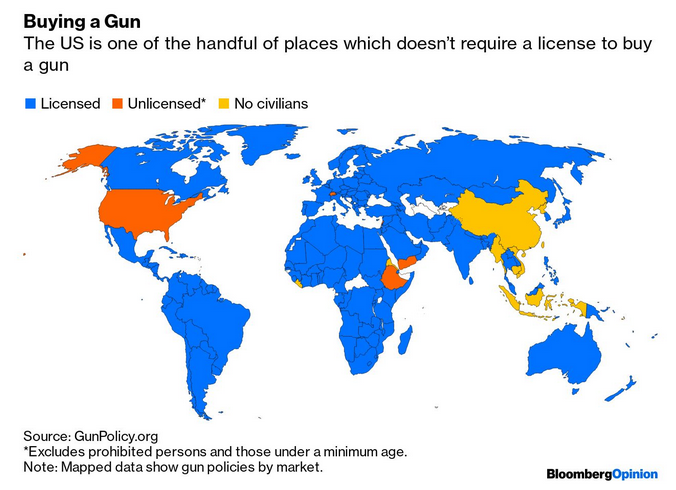 |
Causes of US Childhood Deaths
| 10 - 02/06/2022 | 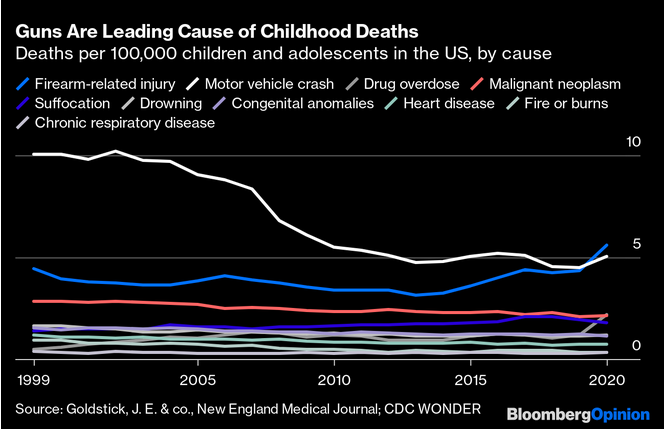 |
Inflation breaking down
| 11
- 02/06/2022 |
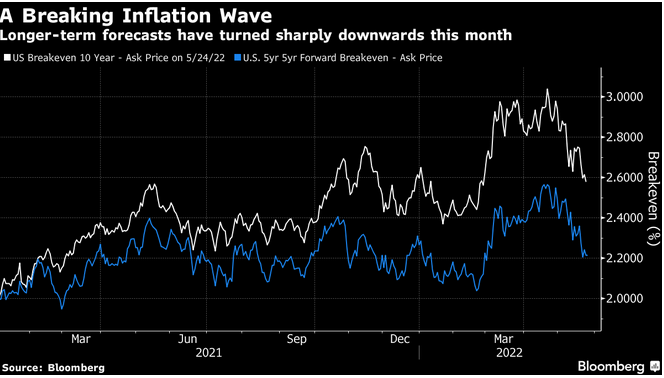 |
Container shipping profits
| 12 - 02/06/2022 | 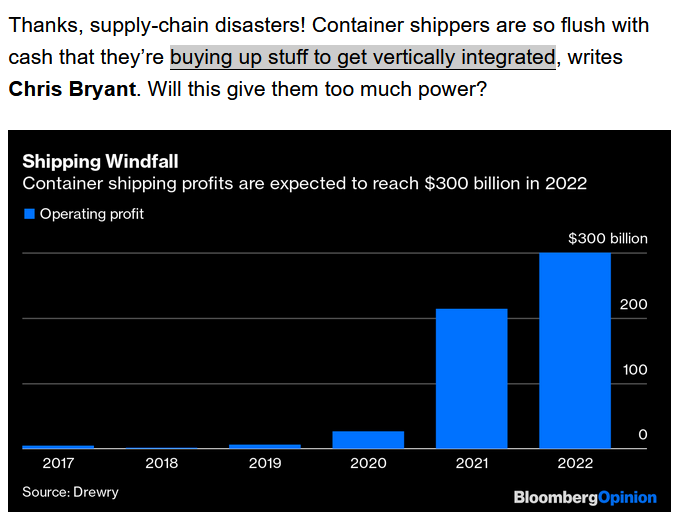 |
Meta-Analyses of Glyphosate and Non-Hodgkin's Lymphoma: Expert Panel Conclusions and Recommendations.
Note: Glyphosate, a glycine derivative, is a non-toxic, non-selective systemic herbicide intended to be applied directly to plant foliage. It is one of the most widely used herbicides in agriculture, forestry, industrial weed control, lawn, garden, and aquatic environments—more than 750 products are currently for sale in the United States containing glyphosate.
Here are a few key points from the study:
- This is one of the most comprehensive analyses of existing research on the topic to date, and the findings support the most recent actions taken by the EPA to allow the continued use of glyphosate without a cancer warning label. Further, the results raise questions on the validity of thousands of pending lawsuits claiming that glyphosate exposure causes cancer.
- A double-blind review of eight published meta and pooled analyses by a panel of six senior international experts with deep expertise in the fields of epidemiology, biostatistics, toxicology, and meta-analysis indicates low confidence in a causal relationship between non-Hodgkin's lymphoma and glyphosate, although there were too few studies to reach a conclusion on some particular non-Hodgkin's lymphoma subtypes.
- This consistent score of low confidence—an average of 3 on a scale of 1-10, with no score going above 5— indicates that consumers should be confident that there is currently no evidence of a relationship between glyphosate and non-Hodgkin's lymphoma. Regulators with oversight over the chemical, along with attorneys and judges involved in glyphosate litigation, should take this broad-based research into account when making policy and legal decisions.
The original publication with the mega-study results in the Journal of Toxicology and Risk Assessment
See clinmedjournals.org
The Estuary, Wells-next-the-Sea, Norfolk, John Alfred Arnesby Brown (1866-1955), Nottingham City Museums & Galleries
| 09 - 02/06/2022 |  |
How Xi Jinping is damaging China’s economy... Inflexible policies are trumping pragmatism
Over the past 20 years China has been the biggest and most reliable source of growth in the world economy. It contributed a quarter of the rise in global gdp over that period and expanded in 79 of 80 quarters. For most of the period since China opened up after Mao’s death, the Communist Party has taken a practical approach to making the country richer, mixing market reforms with state control. Now, however, China’s economy is in danger. The immediate issue is its zero-covid campaign, which has caused a slump and may condemn the economy to a stop-start pattern. That is compounding a bigger problem: President Xi Jinping’s ideological struggle to remake state capitalism. If it stays on this path China will grow more slowly and be less predictable, with big consequences for it and the world.
.../...
>>> The perils of one-man rule
And what of life inside a more insular China? While people vent online about lockdowns and lost jobs, this is unlikely to translate into unrest thanks to surveillance, propaganda and broad support for the party’s goals. Some technocrats disagree with the country’s leftward shift but lack the power and courage required to object to it. And to the extent it can be discerned from the black box of elite politics, there is no rival to Mr Xi, who is 68. Yet in the run-up to a party congress that may see him secure power until at least 2027, the shortcomings of one-man rule in the world’s second-largest economy are glaring.
| See economist.com |  |
The Old Silk Mill, Derby, by John Alfred Arnesby Brown (1866-1955), Derby Museum and Art Gallery
| 10 - 02/06/2022 |  |
Solar Microgrids Are Keeping Ukraine’s Hospitals Running, by Chris York, May 23, 2022
U.S. renewables experts support the war-besieged country with tech hailed a ‘game-changer’ for disaster relief settings.
.../...
Are solar microgrids the future of humanitarian response? In one sense, that future is already here. That said, there’s still a place for more powerful diesel generators until solar technology further improves.
“It depends on what the mission is,” says Shmotolokha. “If you’re housing refugees in a stadium and you need to power the stadium lights, you’re going to need a megawatt diesel generator. But if you want to run a community center that’s distributing food, then we’ve already done that a bunch so no problem there. There’s a lot of innovation happening. What we’re doing today, you just couldn’t have done even two or three years ago.”
See reasonstobecheerful.worldv
The Raincloud, by John Alfred Arnesby Brown (1866-1955), Royal Academy of Arts
| 11 - 02/06/2022 | 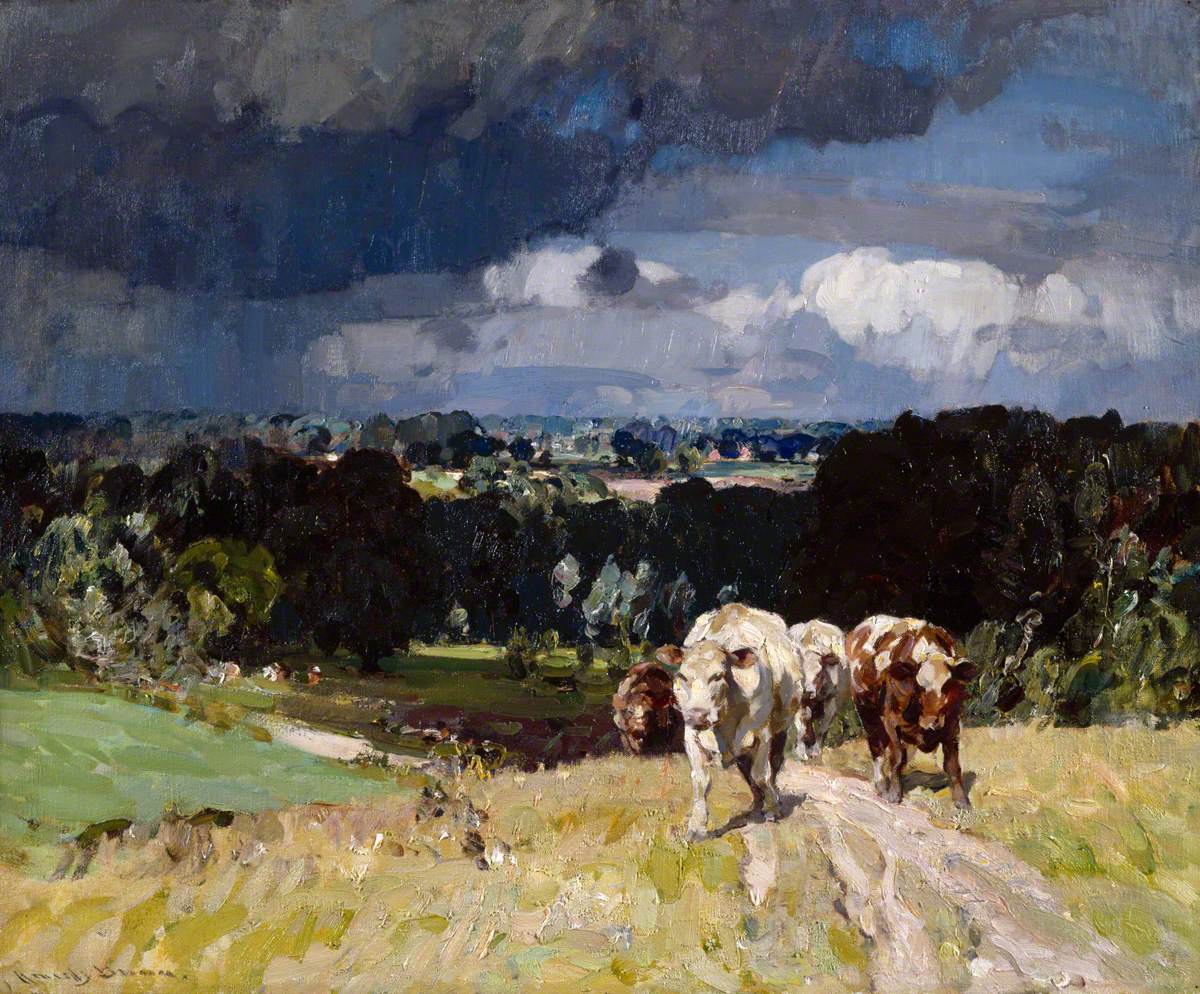 |
Five short Jewish Jokes
I saw my first porno recently. It was a Jewish porno film, one minute of sex and nine minutes of guilt.
"I hear loud knocks on the door. It is either the Gestapo or the pizza delivery with the pizza I ordered."
My mom used to work at the Holocaust Memorial in Yad Vashem in Jerusalem. She used to give a lot of group tours. One of the group members one day asked her, "What is the most devastating document you encountered in Yad Vashem?" She looked at him and said, "My paycheck."
Years back on Larry King Live, Marlon Brando made the shocking statement that "Hollywood is run by Jews." In response, outraged Jewish organizations made it snow in April.
A waiter at a kosher restaurant comes up to a family and asks, "Is anything okay?"
| |
The distribution of this efita newsletter is sponsored by vitisphere.com
Please, contribute to the content of your efita newsletter, and advertise your events, new publications, new products and new project in this newsletter. Without your support, it will not survive!
Contact: Guy WAKSMAN
E-mail: guy.waksman(a)laposte.net
To read this newsletter on our web site
See Efita
The archives of this newsletter
See Efita
Do not miss the Virus Jokes in English and French
About the EFITA mailing list
You can use the efita moderated list (> 15000 subscribers) to announce any event / product / web site / joke (!) related to IT in agriculture, environment, food industry and rural areas.
If you want to subscribe a friend, please fill in his form.
If you do not wish to receive our messages, please fill in the following form...
